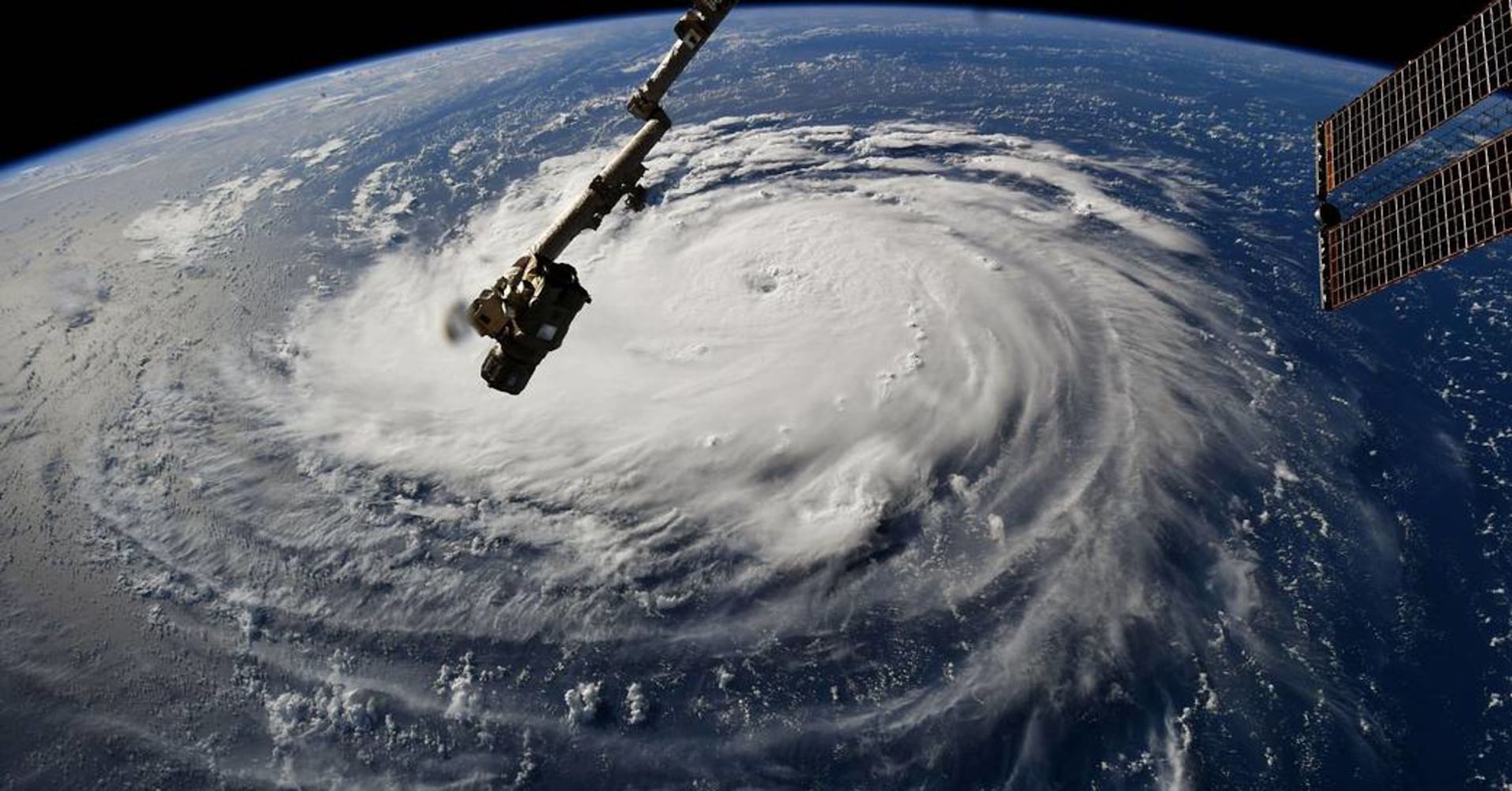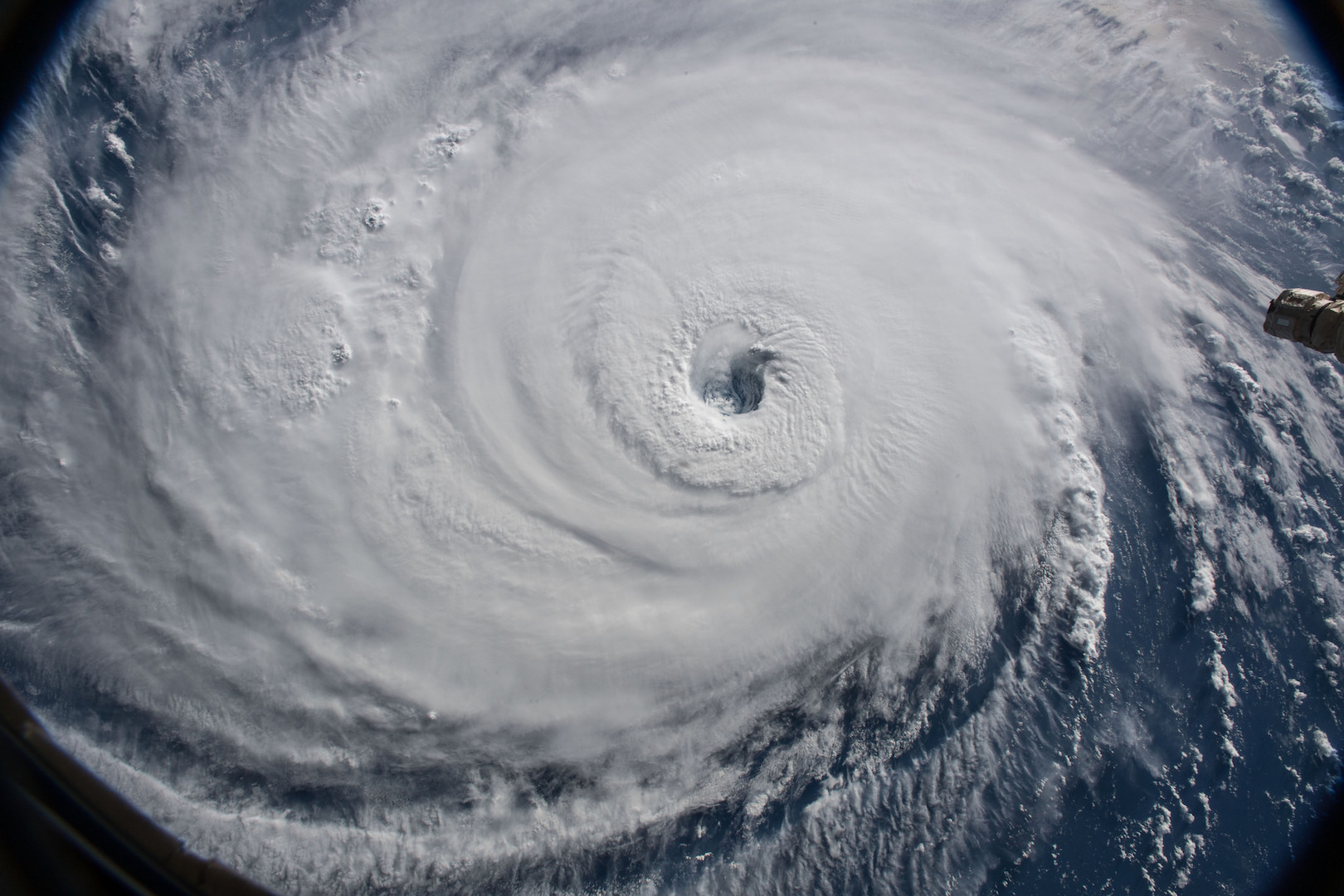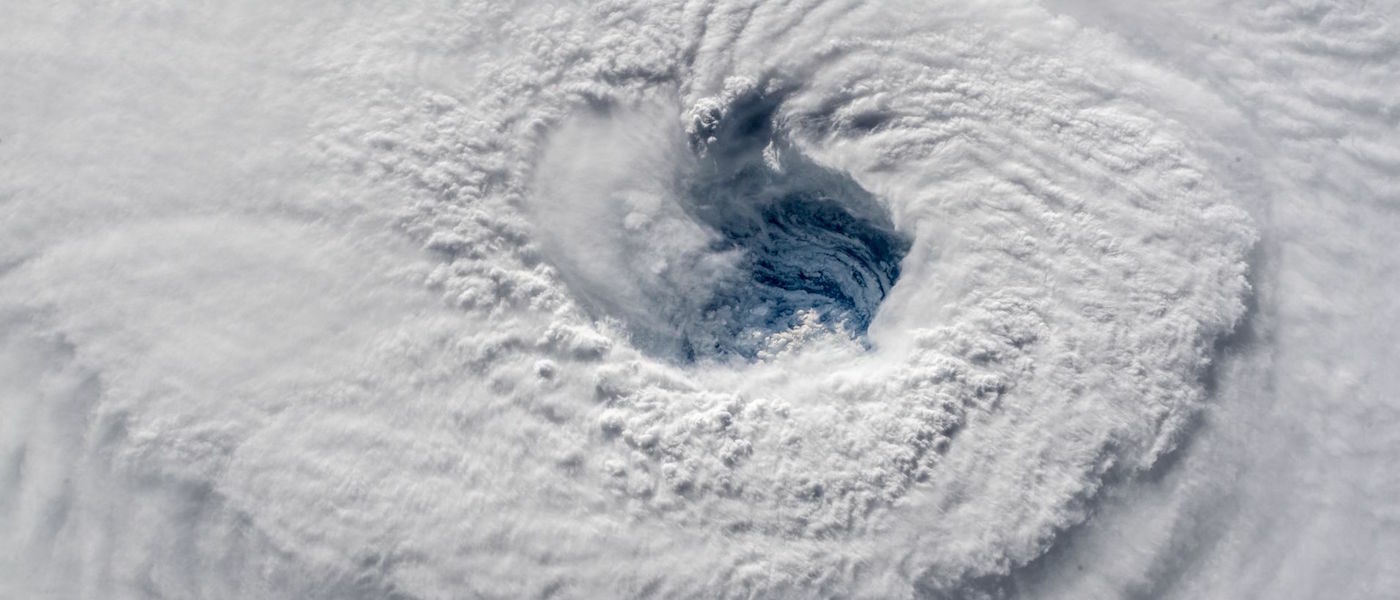We're tracking Hurricane Florence all weekend at LSC

Swirling above the warm waters of the Atlantic Ocean, Hurricane Florence has spent the last few days making its way toward the East Coast. Tonight the storm is expected to make landfall in the North Carolina area.
We'll be monitoring the storm's progression this weekend in our Dynamic Earth show at LSC's Weston Family Lab for Earth and Space Exploration. This weekend's storm-focused show will play at four times: 11:45 am, 12:45 pm, 2:45 pm, and 4:45 pm. We'll use the lab's Science on a Sphere – a six-foot suspended globe that tracks conditions anywhere on Earth's surface – to explore Florence and other storm activity around our planet using real-time data directly uploaded from NOAA (National Oceanic and Atmospheric Administration).
Additionally, in our Jennifer Chalsty Planetarium, we're featuring views of Hurricane Florence as taken by astronauts on the International Space Station. You can see that in our all-live show, Wonders of the Night Sky, playing at 1:30 pm on Saturday and Sunday.

So what exactly are hurricanes?
Anywhere in the world where you find warm oceans are where you will also find hurricanes, typhoons, and cyclones. Areas of the world where you find warm oceans are where you also will find hurricanes, typhoons, and cyclones (fun fact: these are all the same thing, just with different names!).
Those warm waters make the air above warm as well. The warm air rises up and creates thunderstorms. If enough thunderstorms form in one region, an area of low pressure develops and starts to spin around. This spinning of wind happens because the Earth is also spinning, creating something called the Coriolis Effect. When the swirling winds reach speeds of 74 mph and greater, the storm is officially a hurricane.
But the hurricane won’t continue forever! If the hurricane reaches land or moves over cooler water, its power source of warm water is gone. The hurricane will eventually lose strength and die down.

Hurricane Florence has currently reached strengths towards the highest end of the Saffir-Simpson scale, which is the way scientists measure how powerful a hurricane is.The scale goes from 1-5, with a rating of Category 5 meaning winds are gusting at speeds over 157 mph. Florence has reached Category 4, with some winds reaching Category 5 speeds.
It is also a large storm, covering 73,000 square miles from its center (that’s larger than New Jersey!). It is expected that 40 inches of rain could fall in the areas Hurricane Florence is projected to travel over.
Thankfully, there are many points of view of the oceans from satellites, as well as data from ships, buoys floating in the ocean, and even jets that fly into the storms! This allows up-to-date information about the hurricane, more precise projections of where the hurricane will travel to, and give people advanced notice to make sure they can get to a safer location out of the path of Hurricane Florence.
